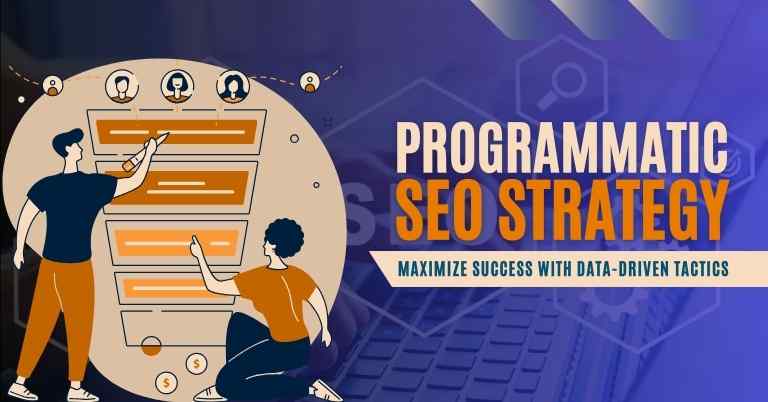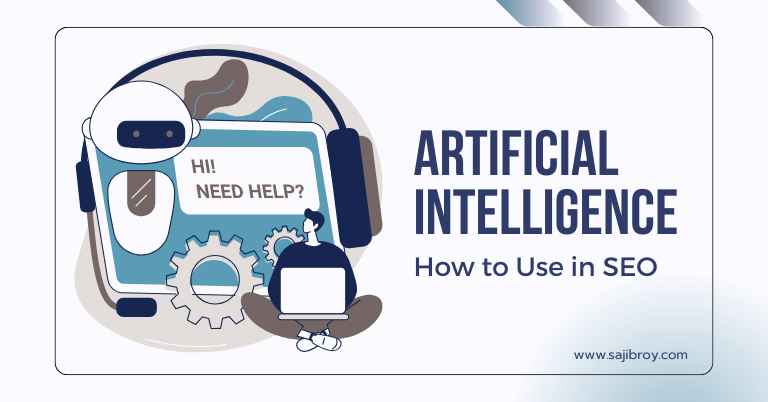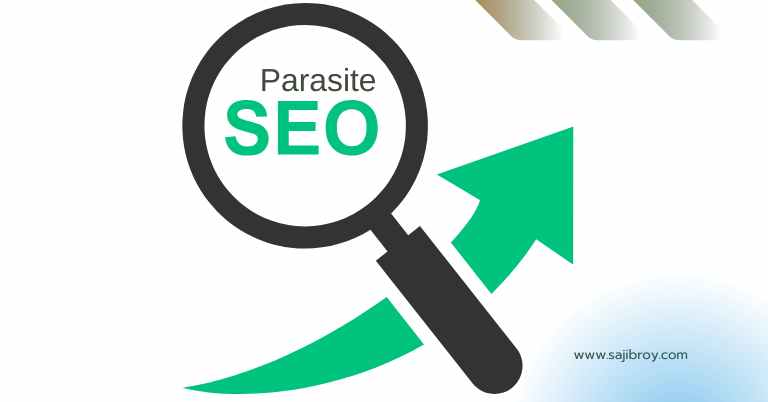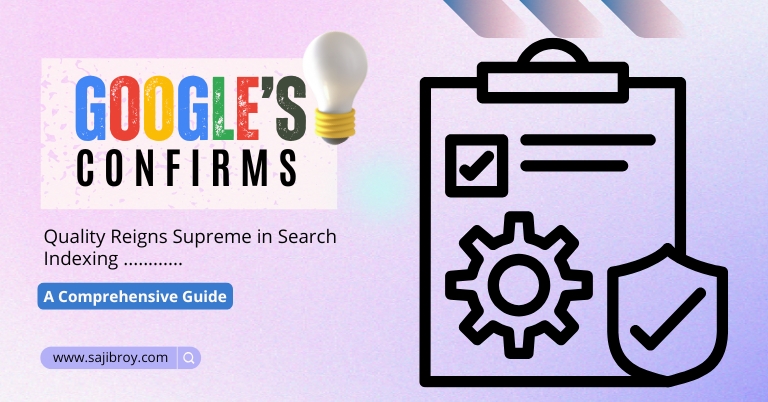Programmatic SEO is a data-driven SEO approach that targets Google’s ranking criteria in a scalable way, allowing you to create high-quality, user-friendly content with niche relevance. It involves automating the generation of a large number of pages using specialized code and a datasheet containing relevant keywords.
This strategy is used by companies like Tripadvisor and Yelp to reach their target audience effectively. The main difference between programmatic SEO and traditional SEO is that programmatic SEO utilizes automation to publish bulk pages based on a template and database.
Implementing a programmatic SEO strategy can significantly improve your website’s visibility and organic search rankings.
Let's See the Topic Overview
Understanding Programmatic SEO
What is Programmatic SEO?
Programmatic SEO is a specific type of data-driven SEO that focuses on Google’s ranking criteria of relevance, quality, and usability. It involves creating high-quality and user-friendly content with niche relevance for your target customers. The approach is scalable and allows you to reach a larger audience effectively.
How does Programmatic SEO differ from traditional SEO?
The main difference between Programmatic SEO and traditional SEO lies in the use of automation to publish bulk pages based on a template and a database. Programmatic SEO still adheres to the basics of SEO, but it employs automation to create and implement an efficient SEO strategy. This approach allows for the creation of a large number of pages without sacrificing quality and relevance.
Benefits of implementing Programmatic SEO
Implementing Programmatic SEO offers several benefits that can enhance your overall SEO strategy:
- Scalability: With programmatic SEO, you can create a significant number of pages efficiently, reaching a wider audience and increasing your online visibility.
- Efficiency: The automation aspect of Programmatic SEO saves time and resources by eliminating manual page creation and optimization tasks.
- Targeted Content: By using data-driven insights, Programmatic SEO allows you to create content that specifically caters to the needs and interests of your target audience.
- Improved Rankings: Programmatic SEO focuses on Google’s ranking criteria, ensuring that your content is more likely to rank higher in search engine results pages.
- Enhanced User Experience: The emphasis on quality and usability in Programmatic SEO means that your website will offer a better user experience, ultimately leading to higher engagement and conversions.
Key Components Of A Data-Driven Programmatic SEO Strategy
Programmatic SEO is a data-driven approach that utilizes various components to optimize a website’s search visibility. By incorporating these key components into your SEO strategy, you can ensure that your website is both relevant and user-friendly, leading to improved rankings on search engine result pages (SERPs). Let’s explore the essential elements of a data-driven programmatic SEO strategy:
Finding relevant keywords and topics
One of the foundations of programmatic SEO is finding relevant keywords and topics that align with your target audience’s search queries. Using keyword research tools, you can identify high-volume keywords with low competition, allowing you to optimize your content effectively. Additionally, analyzing user search trends can provide valuable insights into the topics and keywords that are currently popular among your target audience, enabling you to create content that resonates with them.
Analyzing user intent and search trends
Understanding user intent is crucial for developing an effective programmatic SEO strategy. By analyzing user search behavior, you can determine the underlying purpose behind search queries and tailor your content to fulfill those needs. Identifying search trends also allows you to stay ahead of the curve and create content that matches the current interests and preferences of your target audience.
Creating high-quality, user-friendly content
High-quality, user-friendly content is at the heart of any successful programmatic SEO strategy. By creating content that addresses your audience’s pain points, provides valuable information, and engages users, you can establish your website as an authoritative source in your industry. Moreover, ensuring that your content is easy to read, visually appealing, and properly structured can enhance the user experience and encourage visitors to spend more time on your site.
Optimizing on-page elements for better search visibility
Optimizing your website’s on-page elements is essential for improving its search visibility. This includes optimizing meta titles and descriptions, headers, URLs, and image alt tags. By incorporating relevant keywords into these elements and ensuring that they are well-structured and descriptive, you can increase the likelihood of your website ranking higher in search results.
Leveraging data analysis to make informed decisions
Data analysis plays a vital role in a data-driven programmatic SEO strategy. By examining website analytics, search console data, and other relevant metrics, you can gain valuable insights into your website’s performance, user behavior, and areas for improvement. These insights can inform your decision-making process, allowing you to make data-driven changes to your SEO strategy and optimize your website for better search rankings.
Implementing A Data-Driven Programmatic SEO Strategy
Implementing a data-driven programmatic SEO strategy is crucial for maximizing your website’s visibility and organic search rankings. By utilizing data insights and analytics, you can create targeted content that resonates with your audience and effectively boosts your online presence. In this article, we will explore the key steps to implement a data-driven programmatic SEO strategy:
Researching and identifying target audience segments
Understanding your target audience is the foundation of any successful SEO strategy. By conducting thorough research and analysis, you can identify specific audience segments that are most likely to engage with your content. This involves collecting data on demographics, interests, online behavior, and search patterns.
To gather this information, you can utilize various tools such as Google Analytics, social media insights, and keyword research tools. These tools provide valuable data insights that help you narrow down your target audience and tailor your content to their specific needs and interests.
Developing content themes and topics based on data insights
Once you have identified your target audience segments, it’s time to develop content themes and topics that align with their interests and preferences. By leveraging the data insights you have gathered, you can discover the most relevant and engaging topics for your audience.
Focus on creating content that addresses their pain points, provides solutions to their problems, or offers valuable information that they are actively seeking. By aligning your content with their needs, you can establish your website as a trusted resource and increase your chances of ranking higher in search engine results.
Creating a content calendar for consistent publishing
Consistency is key when it comes to programmatic SEO. Creating a content calendar allows you to plan and organize your content creation and publishing schedule. This ensures that you consistently provide your audience with fresh, valuable content.
When creating your content calendar, consider factors such as your audience’s preferred publishing frequency, peak engagement times, and key events or trends relevant to your industry. By strategically planning your content, you can maximize your reach and engagement with your target audience.
Incorporating relevant keywords and phrases naturally
Keywords play a crucial role in SEO, helping search engines understand the relevance of your content to users’ search queries. Incorporating relevant keywords and phrases naturally throughout your content is essential for optimizing your website for search engines.
Focus on targeting long-tail keywords that are specific to your audience’s search intent. These keywords tend to have lower competition and higher conversion rates. When using keywords, ensure they are seamlessly integrated into your content, maintaining a natural flow and readability.
Using data analytics tools to track and measure performance
Finally, leveraging data analytics tools is crucial for tracking and measuring the performance of your programmatic SEO strategy. These tools provide valuable insights into metrics such as website traffic, engagement, bounce rates, and conversions.
By regularly monitoring your performance metrics, you can identify areas for improvement, measure the effectiveness of your content, and make data-driven decisions to optimize your SEO strategy. Tools like Google Analytics, SEMrush, and Moz provide comprehensive analytics reports that help you stay on top of your SEO performance.
Implementing a data-driven programmatic SEO strategy requires careful planning, research, and analysis. By leveraging data insights and analytics, you can create targeted content that resonates with your audience, improves your search rankings, and ultimately drives organic traffic to your website.
Best Practices For Maximizing Success With Programmatic SEO
- Staying up-to-date with the latest SEO trends and algorithm changes: In the ever-evolving world of SEO, staying up-to-date with the latest trends and algorithm changes is crucial for success. Google constantly updates its algorithms, and what worked yesterday may not work today. By keeping a finger on the pulse of the SEO industry, you can adjust your programmatic SEO strategy accordingly and stay ahead of the competition.
- Conducting regular audits and optimizations based on data analysis: Data analysis is the backbone of programmatic SEO. Regularly conducting audits and optimizations based on data insights will help you identify areas for improvement and make data-driven decisions. By analyzing metrics such as organic traffic, bounce rates, and conversion rates, you can pinpoint opportunities for optimization and adjust your strategy to maximize results.
- A/B testing different strategies for continuous improvement: A/B testing is a powerful tool for continuous improvement in programmatic SEO. You can identify what resonates best with your target audience by testing different strategies and variations. Whether it’s experimenting with different headlines, keywords, or content formats, A/B testing allows you to optimize your programmatic SEO strategy and ensure you are delivering the most effective content to your audience.
- Emphasizing user experience and engagement: Programmatic SEO is not only about improving search engine rankings but also about enhancing user experience and engagement. Google values websites that prioritize user satisfaction, so it’s essential to optimize your website for usability, mobile-friendliness, and fast loading speeds. By providing an excellent user experience, you increase the chances of users staying on your site, engaging with your content, and converting into customers.
- Leveraging data-driven insights for ongoing content optimization: Data-driven insights are invaluable for ongoing content optimization in programmatic SEO. By leveraging data, you can identify content gaps, optimize underperforming pages, and create new content that resonates with your audience. Whether it’s adjusting keywords, incorporating multimedia content, or improving readability, data-driven insights ensure that your content remains relevant, valuable, and optimized for search engines.
Conclusion
F using automation and data to create and optimize a large number of web pages. It involves analyzing keywords, user intent, and search trends to generate relevant and high-quality content that resonates with your target audience. By leveraging programmatic SEO, you can save time and effort in creating individual pages manually and instead focus on scaling your content creation process.
One example of programmatic SEO is Tripadvisor, which uses specific pages for various travel-related searches. By employing programmatic SEO, Tripadvisor consistently appears in the top search results for queries like “top things to do in (city)”. This demonstrates the effectiveness of this strategy in increasing visibility and driving organic traffic.
Programmatic SEO is an innovative approach to creating and optimizing web pages at scale. By leveraging automation and data-driven insights, businesses can efficiently generate high-quality content that resonates with their target audience. Implementing programmatic SEO can streamline your content creation process and improve your search engine rankings, leading to increased organic traffic and potential customer conversions.



![6-Month Local SEO Plan [Download Your Complete Proposal Template]](https://www.sajibroy.com/wp-content/uploads/2025/01/6-Month-Local-SEO-Plan-Download-Your-Complete-Proposal-Template.jpg)








